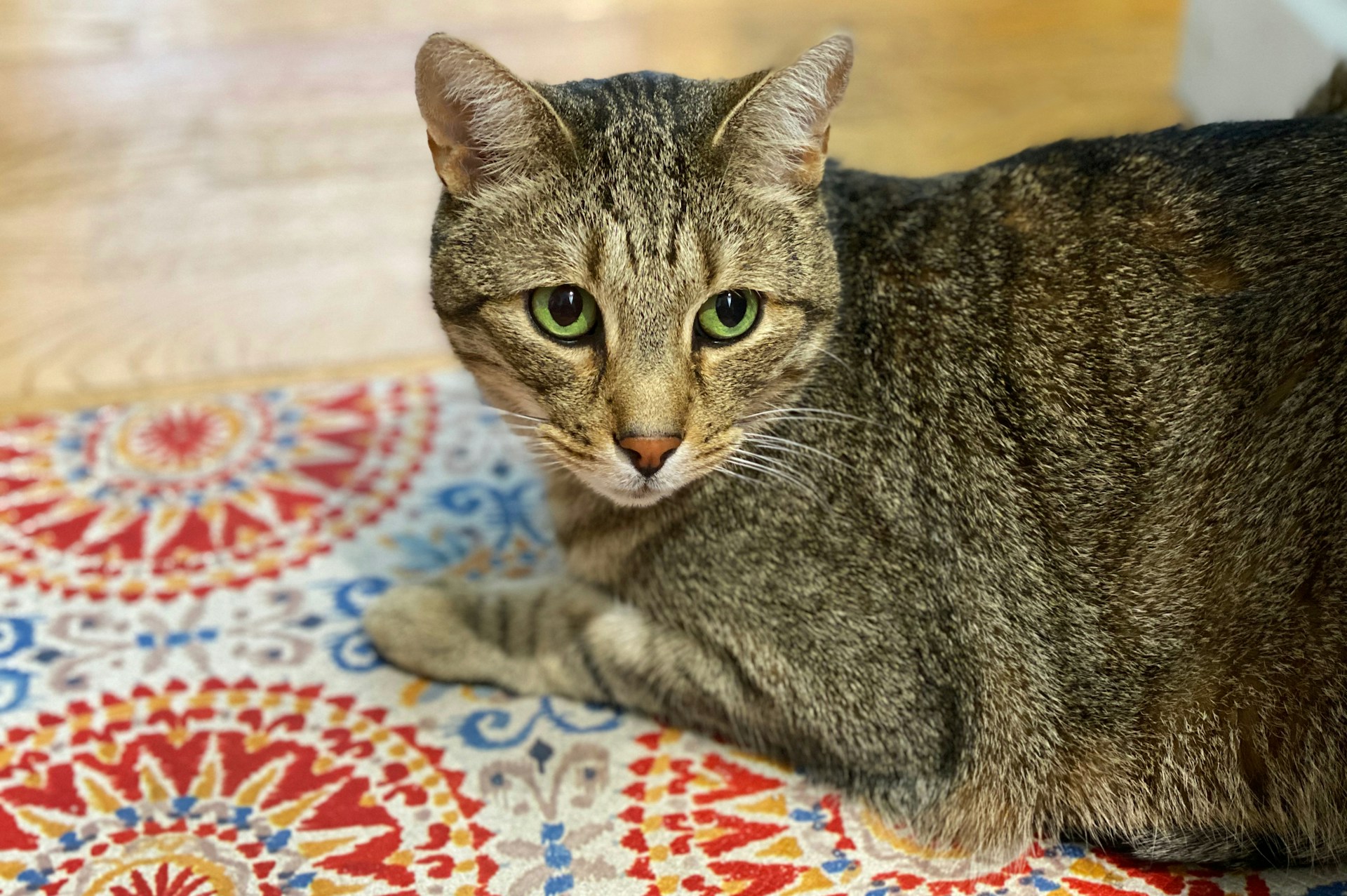Curling up with your cat on the sofa while listening to her purrs provides a unique sense of comfort. It often elicits the same feeling when we smile when we see dogs wag their tails. It is well-known that when cats purr, it signals that our feline companion is happy, relaxed, and content. But, that isn’t always the case, though. There’s a lot of enigma surrounding this behavior as cats can also be observed purring when they are in pain or stressed. So, why do they actually purr, and how do they make this mysterious sound? Let’s discover below!
How do cats purr?
Interestingly, muscles are responsible for the vibrating sound cats produce. As the cat breathes in and breathes out, air flows and hits the diaphragm and the larynx, causing the purring noise. Purring can vary from cat to cat. While purrs tend to be low and be heard in close proximity, some cats are gifted to have louder purrs. Others sound like a blender, which is undoubtedly not a fun way to wake up from a good night’s sleep. Moreover, purrs may have unique rhythmic patterns if scrutinized closely.
Why do cats purr?
Aside from the differences in frequency, volume, and pattern, there are also various reasons why cats purr. You might already be familiar with some of them, while others can be quite surprising.
Purring means your cat is happy.
One of the well-known reasons why cats purr is that they are in a happy place. If cats look relaxed while lying on their back, tail staying still, and their eyes are half-closed, you should be satisfied as you can safely assume that they’re content living with you. Have you seen your cat purr after a good playing session or after eating a treat? That noise is their expression of genuine gratitude. So, take it like your cat’s big smile.
Purring means your cat needs something from you.
Purring often means that your cat needs help. Cats purr when they are hungry, and they want to solicit for food. However, when food is in their mind, they often combine purring with some “meows,” sounding like a human baby cry. Otherwise, they may also purr to get your attention. If she is rubbing against while purring, she may be yearning for some playtime or some snuggles. Regardless of which reason, the sound is usually different from their purrs of joy. As you live more with your cat, you’ll be able to distinguish the difference and respond accordingly.
Purring means your cat wants to get closer to you.
Cats learn how to purr when they are kittens. It is their way of communicating with their mothers to let them know how they feel or where they are. On the other hand, their mom uses purring to draw them nearer to her, especially during the first few days when they can’t still hear or see anything. With that, purring actually helps them build that parent-child connection. So, if your beloved feline companion is purring, chances are she wants to get closer to you. If you give them a nice rub when she purrs, your cat will probably do it again to strengthen your connection.
Purring is a cat’s way of healing.
Cats may also purr to heal themselves. A purr’s frequency is equal to the frequencies used to treat wound, pain, and fractures and assist in growth and flexibility. If you observe your cat purring, she may be healing herself. They may also use this whenever they are hurt, just like how human babies try to make themselves feel better by sucking their thumbs.
Purring means your cat in distress.
While happiness is the reason in most cases, a cat’s purr may not always equate to it. Cats may also purr whenever they feel stressed, anxious, or scared. This behavior traces back when they were still kittens and tried to seek help from their mother for protection or care. Make sure to observe your cat’s purring from time to time and determine if she is in need of some help.
Conclusion
Purring is not only beneficial to cats as it also works wonders for their human parents. Studies show that people who have cats have lower blood pressure and are less vulnerable to heart attacks than non-cat owners. So, when your cat purrs, make sure to pay attention, as this is for your cat and your own benefit. However, be sure to observe and read between her purrs to know whether she is just happy or trying to imply something. Investing more in how your cat communicates helps strengthen and deepens your relationship.

